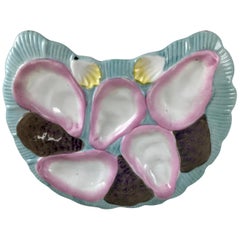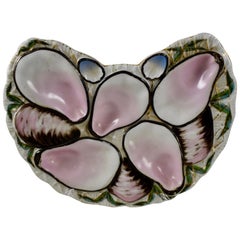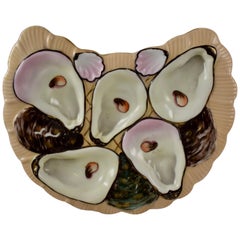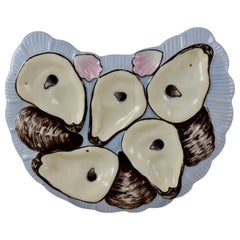Half Moon Oyster Plates
Antique 19th Century French Aesthetic Movement Dinner Plates
Porcelain
Antique 19th Century French Aesthetic Movement Dinner Plates
Porcelain
Recent Sales
Antique 19th Century French Aesthetic Movement Dinner Plates
Porcelain
Antique 19th Century French Aesthetic Movement Dinner Plates
Porcelain
Antique 19th Century French Aesthetic Movement Dinner Plates
Porcelain
Antique 19th Century French Aesthetic Movement Dinner Plates
Porcelain
People Also Browsed
Antique Late 19th Century Aesthetic Movement Dinner Plates
Porcelain
Antique 19th Century French Victorian Ceramics
Porcelain
A Close Look at Aesthetic-movement Furniture
In 1880, polymath designer William Morris declared: “If you want a golden rule that will fit everybody, this is it: Have nothing in your houses that you do not know to be useful or believe to be beautiful.” His words encapsulated the Aesthetic Movement, which prized beauty above all and blurred the lines between fine art and the decorative arts, particularly through lavishly crafted furniture pieces.
The Aesthetic Movement, whose major proponents included author Oscar Wilde, flourished from the 1860s to the 1880s and was mostly popular in England and the United States. Design expositions like the 1876 Centennial International Exhibition in Philadelphia, as well as the publishing of how-to books for interior design, helped disseminate Aesthetic Movement bedroom furniture, serveware, coffee tables and other items, especially to the middle class.
The establishment of new art museums, art clubs and a rising passion for collecting at the time contributed to a growing appreciation for art. Morris’s founding of Morris & Co. in 1862 and the commercializing of this “cult of beauty” by the Liberty store in London, starting in the late 19th century, further disseminated the idea of a domestic space that was thoughtfully and floridly designed.
Leading Aesthetic Movement furniture designers included E.W. Godwin, who drew on Japanese influences and whose work reflected a wider enthusiasm for imported East Asian art. British designer Christopher Dresser created textiles, ceramics and more that were also inspired by Japanese decorative art but were representative of additional diverse design sources that ranged from Egypt to Mexico.
The Aesthetic Movement’s eclecticism resulted in dazzling interiors. Japanese fans were positioned on Renaissance-inspired cabinets with brass hardware, while mantels made of rich walnut or finely carved ebonized wood and adorned with painted Minton tiles mingled with cast-iron chairs against a backdrop of floral wallpaper. In 1881, in New York City, stenciled checkerboard motifs and painted floral murals could be found under an opalescent glass chandelier in a luxurious dressing room designed by German émigré cabinetmaker-decorator George Alfred Schastey. Amid the rise of the industrial age, the style’s promotion of art in everyday life would inform the Arts and Crafts Movement and Art Nouveau.
Find a collection of antique Aesthetic Movement seating, tables, decorative objects and other furniture and antiques on 1stDibs.
Finding the Right Dinner-plates for You
Set the mood when you’re setting the table. The right antique and vintage dinner plates for the meals in your home can truly elevate the dining experience.
We haven’t had our own plate at dinner for very long. It wasn’t until the middle of the 19th century in Europe that individual dinner plates had become the norm, replacing the platters that diners had shared before them. Innovations at the dining table are believed to have been introduced by Italian noblewoman Catherine de’ Medici, who, when she married King Henry II of France in 1533, brought with her decorative table adornments for meals and fine tableware such as silver forks, replacing the fingers and knives utilized during dinner before her arrival. Italy was a bit faster on table settings, and, thanks to Catherine, tableware such as dinner plates would also replace the wooden trenchers and flat slabs of days-old bread that preceded them.
Today, while enthusiasts of mid-century modern furnishings might pine for vintage mismatched dinner plates — a mix of old and new can be refreshing — presenting ceramic vessels, glassware and decorative centerpieces that matched was once actually part of the point as setting the table became more refined during the late 19th and early 20th centuries. And as Fornasetti dinner plates and Chinese porcelain tableware have long held weight as collector’s items and status symbols, your dinner dishes haven’t ever really been merely functional. From antique metal dishes and ornamental earthenware designed by celebrated English ceramics makers Wedgwood, dinner plates are statement-making works that bring elegance and likely stir conversation at your table.
Entertaining is an art form, and the kitchen bar island and dining room table in your space are cherished gathering places where families and friends convene and grow closer over good meals. Browse an extensive collection of antique and vintage dinner plates to pair with these important events today on 1stDibs.



